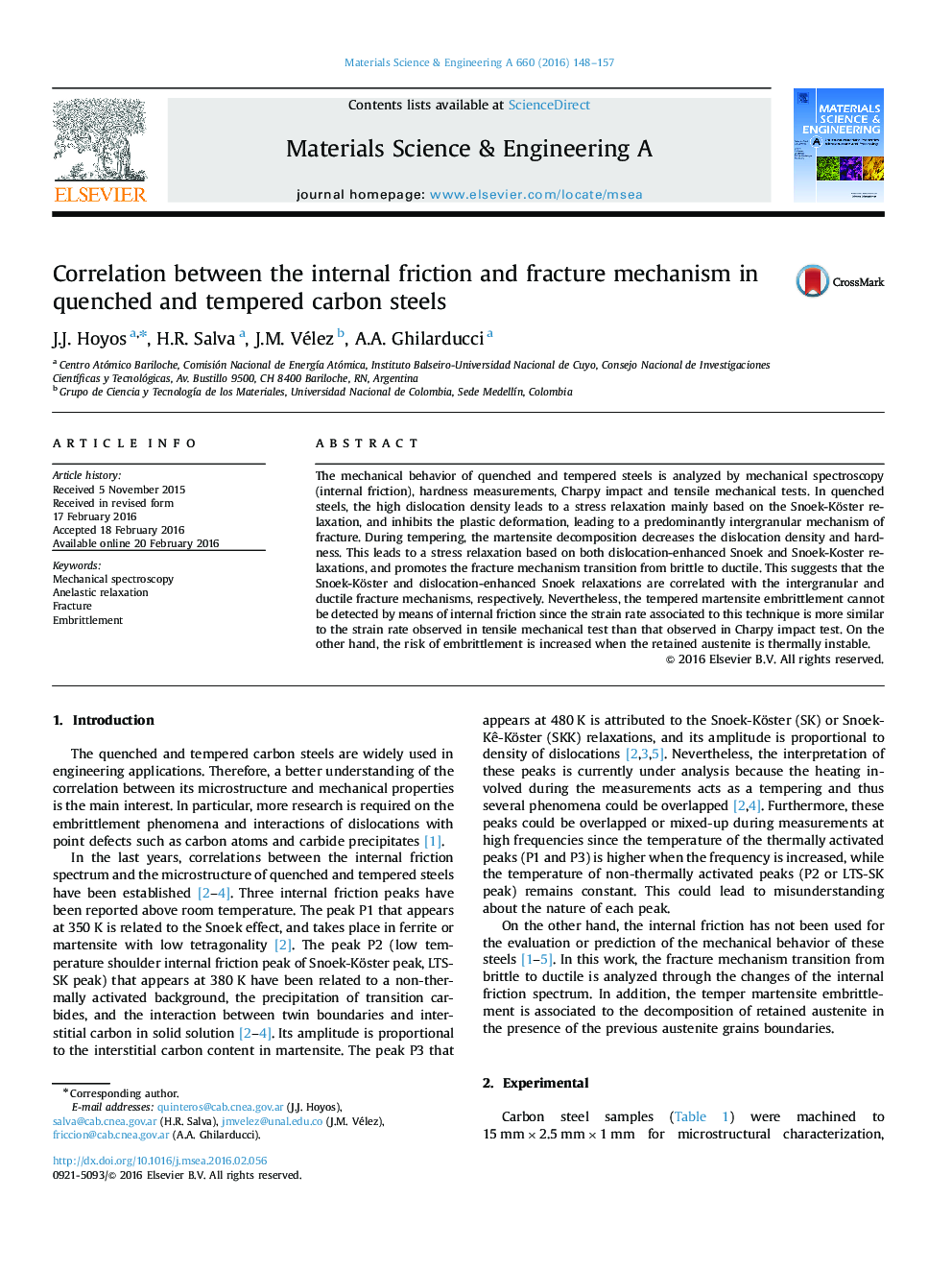| کد مقاله | کد نشریه | سال انتشار | مقاله انگلیسی | نسخه تمام متن |
|---|---|---|---|---|
| 1573264 | 1514683 | 2016 | 10 صفحه PDF | دانلود رایگان |
عنوان انگلیسی مقاله ISI
Correlation between the internal friction and fracture mechanism in quenched and tempered carbon steels
ترجمه فارسی عنوان
همبستگی بین اصطکاک داخلی و مکانیزم شکست در فولادهای کربنی خنک و خنک
دانلود مقاله + سفارش ترجمه
دانلود مقاله ISI انگلیسی
رایگان برای ایرانیان
کلمات کلیدی
طیف سنجی مکانیکی، آرامش بیضه، شکستگی، ضعف
موضوعات مرتبط
مهندسی و علوم پایه
مهندسی مواد
دانش مواد (عمومی)
چکیده انگلیسی
The mechanical behavior of quenched and tempered steels is analyzed by mechanical spectroscopy (internal friction), hardness measurements, Charpy impact and tensile mechanical tests. In quenched steels, the high dislocation density leads to a stress relaxation mainly based on the Snoek-Köster relaxation, and inhibits the plastic deformation, leading to a predominantly intergranular mechanism of fracture. During tempering, the martensite decomposition decreases the dislocation density and hardness. This leads to a stress relaxation based on both dislocation-enhanced Snoek and Snoek-Koster relaxations, and promotes the fracture mechanism transition from brittle to ductile. This suggests that the Snoek-Köster and dislocation-enhanced Snoek relaxations are correlated with the intergranular and ductile fracture mechanisms, respectively. Nevertheless, the tempered martensite embrittlement cannot be detected by means of internal friction since the strain rate associated to this technique is more similar to the strain rate observed in tensile mechanical test than that observed in Charpy impact test. On the other hand, the risk of embrittlement is increased when the retained austenite is thermally instable.
ناشر
Database: Elsevier - ScienceDirect (ساینس دایرکت)
Journal: Materials Science and Engineering: A - Volume 660, 13 April 2016, Pages 148-157
Journal: Materials Science and Engineering: A - Volume 660, 13 April 2016, Pages 148-157
نویسندگان
J.J. Hoyos, H.R. Salva, J.M. Vélez, A.A. Ghilarducci,
